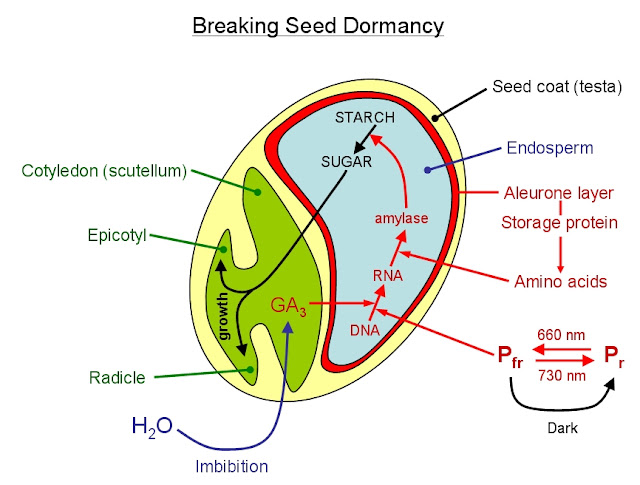New Update Covered smut of barley
B.Sc.Ag. (Hons) Part-III
 |
| Covered smut of barley. https://cststudy.blogspot.com |
Covered smut of barley
Pathogen:
Ustilago hordei (pers.) Langerheim.
Systematic position:
Class- Basidiomycetes
Order- Ustilaginales
Family- Ustilaginaceae
Distribution:
The covered smut of barley is world wide in its distribution. It is found all those countries where the barley crop is grown. It is a common disease of barley in northern India.
Symptoms:
As soon as the ears of the infected plants emerge out, the first symptoms may easily be seen. The smutted or blackened ears come out of the leaf sheath, which may easily be recognized from long distance. All the ears of diseased plant become infected and all the developing grains turn into smut sorus remains covered by a white, shining, silvery membrane, which is partially developed from host tissue and partially from fungus. Due to this compact covering, the smut spores are not blown off, and thus the disease in named "covered smut".
Nature & recurrence of disease:
This is an externally seed borne and systemic disease. Every year the recurrence of disease take place by the contaminated seeds. The mycelium develops from the very beginning, along with the coleoptile and ultimately reaches the ear. During thresing the smut sori break, the smut spores are released and they make the seeds contaminated again.
Control measure:
1. Rogueing:The infected plants may be uprooted and burnt.
2. Seed selection:Seed must be taken from healthy crop.
3. Seed treatment: The infected seeds may be treated with organomercuric compounds such as agrosan GN, and ceresan. About five kg of seeds may be treated with 10gm of seed disinfectant for about 15 minutes.
4. Resistant varieties: The resistant varieties should be grown. Some resistant varieties have been evolved. They are K 12, C.N.294, C 84 etc
If you can't understand something please comment below...




Comments
Post a Comment